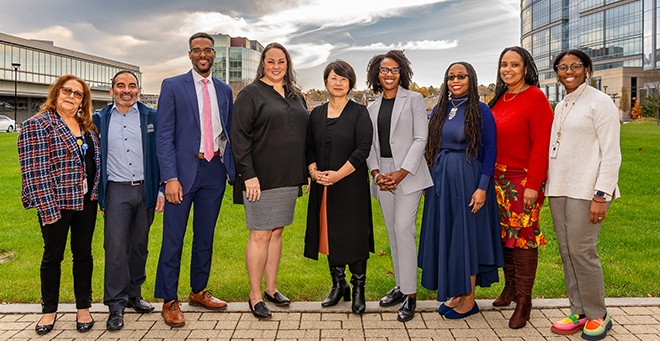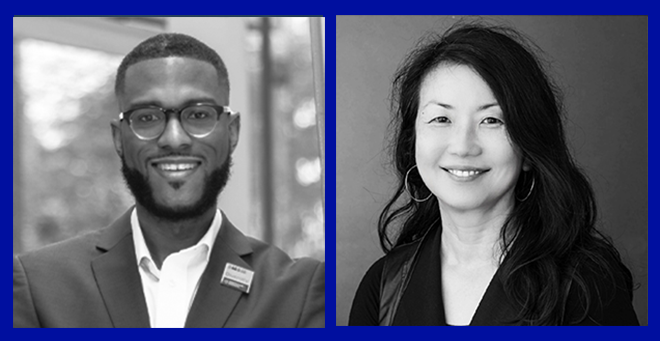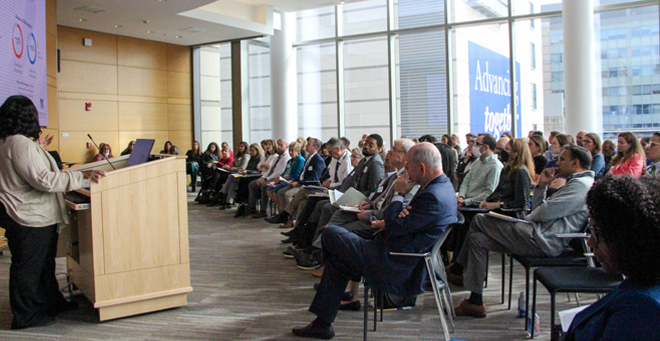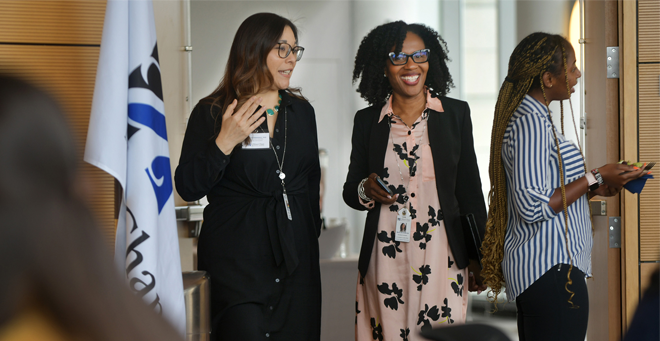
At a time when the relevancy of diversity, equity, inclusion and belonging work is being questioned across the country, UMass Chan Medical School, through the 2024 Diversity Summit on Wednesday, Oct. 30, sought to emphasize the importance of this work to the institution and the role that everyone has in it.
“As the great Fredrick Douglass said, without struggle, there is no progress,” said Marlina Duncan, EdD, vice chancellor for diversity and inclusion, referring to the challenges diversity, equity and inclusion work is facing nationally.
Reiterating his mantra, “We’re not done yet,” from his recent Convocation address, Chancellor Michael F. Collins emphasized that “diversity, equity, inclusion and belonging initiatives are not under attack at UMass Chan. In fact, we need to double down on them.”
The summit, organized by the Diversity and Inclusion Office, was presented through the S.P.A.R.K. framework. The acronym stands for System Level Change, Practical Tools, Address Needs, Research, and Keep Funding, and calls for integrating diversity, equity, inclusion and belonging principles into every aspect of an organization, from services and processes to policies and culture, ensuring a comprehensive approach to systemic change.
Morning keynote speaker Su Joun, principal at Diversity@Workplace Consulting Group LLC, focused on the interconnectedness of diversity, equity, inclusion and belonging.
After gathering a slew of responses from listeners about why we need to do this work, Joun focused on “the how,” naming access to entry, access to success and who needs to do the work as the focus.
“A majority of people didn’t get to where they are on meritocracy alone, but through access,” said Joun. “Access isn’t just physical access, but it it’s access to the same tools, to the same information, to the same funds, to the same time, energy, all of that.” She encouraged listeners to expand their networks when sharing information and to be intentional by targeting underrepresented demographics and shifting systems in hiring and interviewing for better outcomes.
Afternoon keynote speaker Marcus Lambert, PhD, associate vice president for research at SUNY Downstate Health Sciences University, shared insights on the importance of planning, mobilizing and organizing for faculty recruitment and retention.
According to Dr. Lambert, Black and Hispanic faculty members are still significantly underrepresented in academia.
“We looked at the college numbers, and we did some projections statistically that if nothing else changes about the interventions that we’re doing, certain groups will either still remain flat or go down if we aren’t making an intervention in terms of the proportion of STEM degrees that they’re receiving,” said Lambert.
Lambert called for a look at barriers at various milestones. “The challenges also lie in retention,” he said. Sharing examples from his experiences in academia, he emphasized the creation of mentoring circles and professional development with the support of leadership. Borrowing from the health world, Lambert created a social ecological model for faculty recruitment. The model looks at faculty recruitment and retention from individual, interpersonal, institutional, community and policy levels. Each step is examined systematically and evaluates what equitable practice looks like at each phase.
Lambert concluded his talk with some questions to listeners, “What can you do? How does this translate to you? What can you take away to enhance your environment, to enhance your program, to enhance your projects,” said Lambert.


